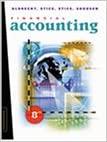Entries for issuing Bonds and Amortizing Discount by Straight-Line Method On the first day of its fiscal year, Chin Company issued $12,100,000 of five-year, 6% bonds to finance its operations of producing and selling home improvement products. Interest is payable semiannually. The bonds were issued at a market (effective) interest rate of 8%, resulting in Chin receiving cash of $11,118,533. a. Journalize the entries to record the following: 1. Issuance of the bonds. 2. First semiannual interest payment. The bond discount is combined with the semiannual interest payment. (Round your answer to the nearest dollar) 3. Second semiannual interest payment. The bind discount is combined with the semiannual interest payment. (Round your answer to the nearest doltar.) IT an amount box does not require an entry, leave it blank. 11,118.533 Discount on Bonds Payable Bonds Payable 1. Cash 981,467 12.100.000 2. Interest Expense Discount on Bonds Payable Cash 665.00 X 3. Interest Expense Discount on Bonds Payable Cash Cash Feedback Check My W Bonds Payable is always recorded at face value. Any difference in issue price is reflected in a premium or discount account. The straight-line method of amortization provides equal amounts of amortization over the life of the bond. b. Determine the amount of the bond interest expense for the first year, c. Why was the company able to issue the bonds for only $11,118,533 rather than for the face amount of $12,100,000? The market rate of interest is greater than v the contract rate of interest. Therefore, inventors are not willing to pay the full face amount of the bonds Check My Word D. Remember that the amortization of a bond discount or premium affects the amount of interest expenses recorded. c. Bonds will be issued for either a higher or lower amount than the face value when the market and contract rates of interest are different Foama Present Value of Bonds Payable; Premium Moss Co. issued $200,000 of four year, 13% bonds, with interest payable semiannually, at a market (effective) interest rate of 12% Determine the present value of the bonds payable, using the present value tables in Exhibit 5 and Exhibit 7. Round to the nearest dollar, Check My Work Remember, the selling price of a bond is the sum of the present values of the face amount of the bonds due at the maturity date and the periodic interest to be paid on the bonds The market rate of interest is used to compute the present value of both the face amount and the periodic interest









